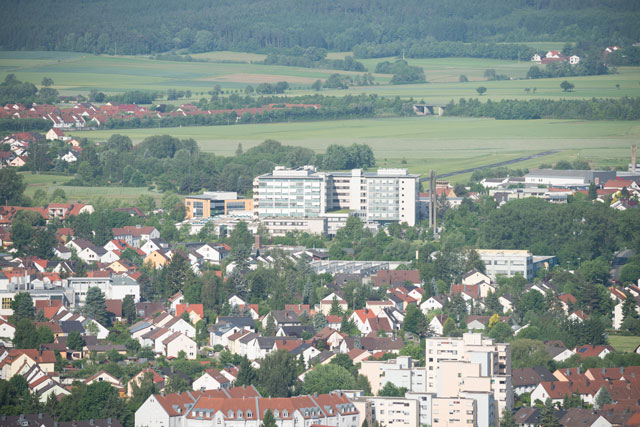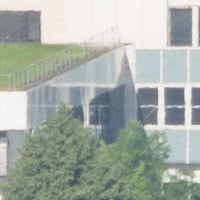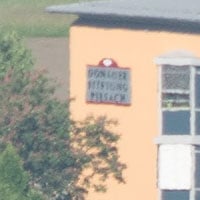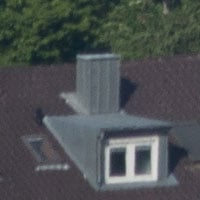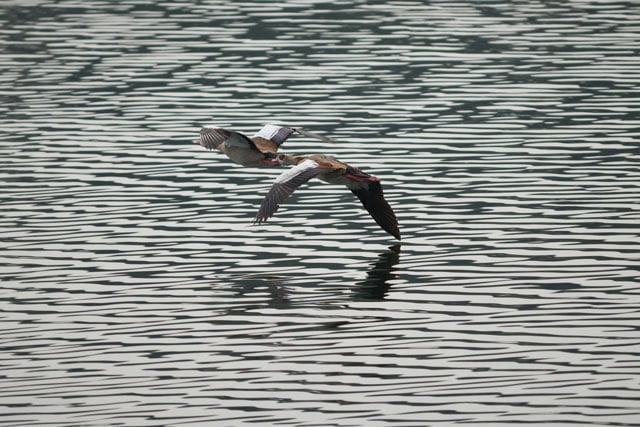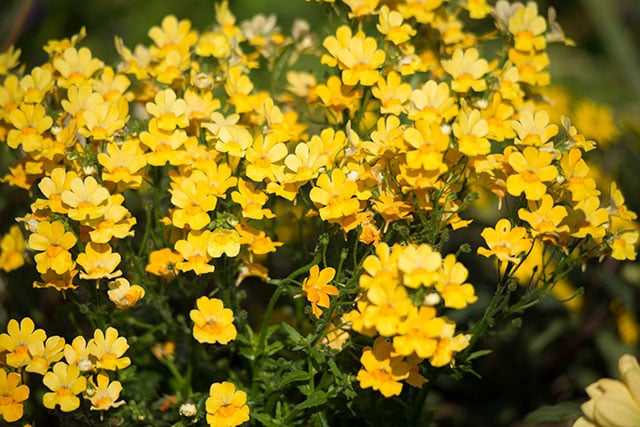Sigma 150-500mm f5-6.3 OS review
-
-
Written by Thomas
Samples
The following images were taken with the Sigma AF 150-500/5-6.3 OS on a Nikon D800. Each image was recorded in RAW and converted with Lightroom 4 at Adobe Standard settings. Noise-reduction is set to 0, sharpening to 70/0.5/36/10, no extra tone, color, or saturation-adjustment was used. Some images have White Balance set to a standard daylight value to make them comparable. You can click on each image to access the large original. Please respect our copyright and only use those images for personal use.
The first image shows what you can achieve in a typical landscape situation.
Clicking of the image gives you access to the large original version. The central building is about 2.8 km away from the camera and you have to take into account that heat-shimmer is already building at 8:38 in the morning. Still the image quality is very usable.
Next up is a shot that shows you the performance with closer targets. Focus was on the duck in the middle and the 100% crops show the details you can get. It also shows a more typical situation where the corner performance is not really critical.
| Ducks: shot with Sigma 150-500 OS at 290mm on a D800 | ||||
| Main image (DX-crop) and all 100% crops: 290mm, f8, 1/640 sec, OS=ON, 360 ISO, no NR | ||||
 | 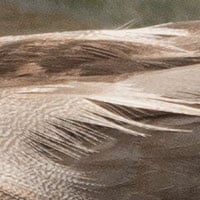 | 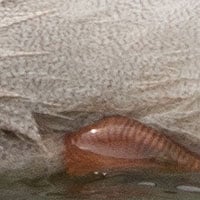 | ||
100% crop | 100% crop | 100% crop | ||
Birds in flight belong to the more challenging shots you can do with a long tele-zoom. I had to use 500 mm and still crop to DX to display the birds in a satisfying size. I set the ISO automatic of the D800 to use 2x focal length (i.e. 1/1000 sec in this case) because I didn’t want to bet that the OS could eliminate all shake/movement from this action-shot. Again – quite typical for many long tele shots – corner performance doesn’t matter here.
| Birds in Flight: shot with Sigma 150-500 OS at 500mm on a D800 | ||||
| Main image (DX-crop) and all 100% crops: 500mm, f8, 1/1000 sec, OS=ON, 320 ISO, no NR | ||||
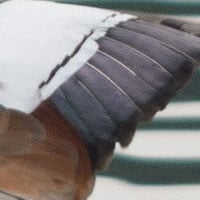 | 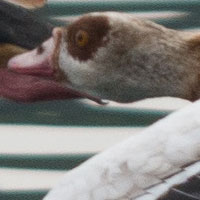 | 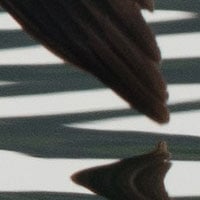 | ||
100% crop | 100% crop | 100% crop | ||
Can f6.3 lenses produce Bokeh? Yes they can. Just remember that a small dof is not only produced by large apertures but also by large magnification. The following shot was taken at 500/6.3 at around 2.8m distance. The 100% crops are from the focal plane, a little behind, and even further behind the point of sharpest focus. As you can see the bokeh of subjects far behind the focal plane is pretty good (right crop) but the middle crop displays a characteristic that we’ve already seen in the Siemens-stars: subjects still keep some degree of sharpness but bright areas produce a halo and bleed into their darker neighborhoods. Thus the contrast of out-of-focus subjects is reduced visibly but without the “creamy” characteristic of a top-notch bokeh.
| Flowers: Bokeh shot with Sigma 150-500 OS at 500mm on a D800 | ||||
| Main image and all 100% crops: 500mm, f6.3, 100 ISO | ||||
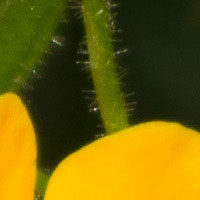 | 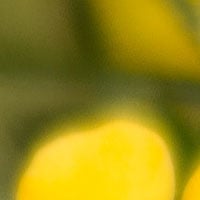 | 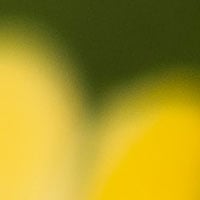 | ||
100% crop | 100% crop | 100% crop | ||
Check out more Sigma 150-500/5-6.3 OS sample images.
Focus and build quality
Focus accuracy and repeatability is critical for long tele lenses with their large magnification and resulting shallow depth of field. Repeatability (the accuracy of focus on the same subject after repeated focus-acquisition) of the Sigma zoom is very good with no outliers over a series of 20 shots although there is a slight focus-difference when the lens comes from infinity vs its minimum focus distance. The lens focuses relatively slowly taking around one second from infinity to 2.2m.
The focus ring of the 1.8G turns approximately 125 degrees from infinity to MFD. This throw is good enough for manual focusing (in live-view), and there is no play between the focus-ring and the focus-action. The movement of the focus-ring is pretty smooth and AF-operation is quiet. The movement of the zoom is very smooth which easily leads to zoom-creep when the lens is pointing down or up. Fortunately Sigma implemented a zoom-lock at 150mm. But you have to be very careful: If you hold the zoom at the front-end to keep the lens stable you might easily shift the focal length by simply pushing or pulling at it. The general impression of build quality of this lens is smooth and precise with only small tolerances although the light weight implies that it is not built like a tank. So be careful when carrying or transporting this lens: the use of the padded case might be a good idea to prevent the lens from bumping around in your trunk.
Image stabilization
All lenses with image stabilization look quite good through the viewfinder – which unfortunately has the negative effect of giving you almost no visual feedback on the quality of your hand-holding. But even if you have OS/IS/VR in your lens you better do your very best to keep the lens as stable as you can to make the action of the image stabilization as easy as possible. Because I can tell you: Looking through the viewfinder and finding everything smooth and virtually shake-free does not necessarily translate into blur-free 500mm images when examined at 100% magnification.
So I did some tests hand-held at 500mm to find out whether switching on OS could help to get a hit rate of sharp photos that equals shots without OS at 4x shorter shutter speeds. So I was effectively testing the assumption that the OS could give you a 2 stops advantage. When I tested the Sigma 120-400 OS I was quite disappointed to find only a 1 stop advantage (see my review of the Sigma AF 120-400mm f/4.5-5.6 DG OS HSM).
It turned out that the shots at 1/125 sec with OS=ON almost matched the distribution of quality that I could achieve at 1/500 sec with OS=OFF. So this implies an effectiveness of the image stabilization of around 2 stops.
Overall: We all know that top performance beyond 300mm focal length costs top dollars. So don’t be too disappointed at the image quality of this lens at 400 mm and 500 mm. For (a) this lens sells for under 1000 EUR and (b) the performance at the center is still quite good at the longer end, and if you’re photographing wildlife or sports, it’s the center that really counts. This only leaves me to wrap things up in my Sigma 150-500/5-6.3 OS verdict.
